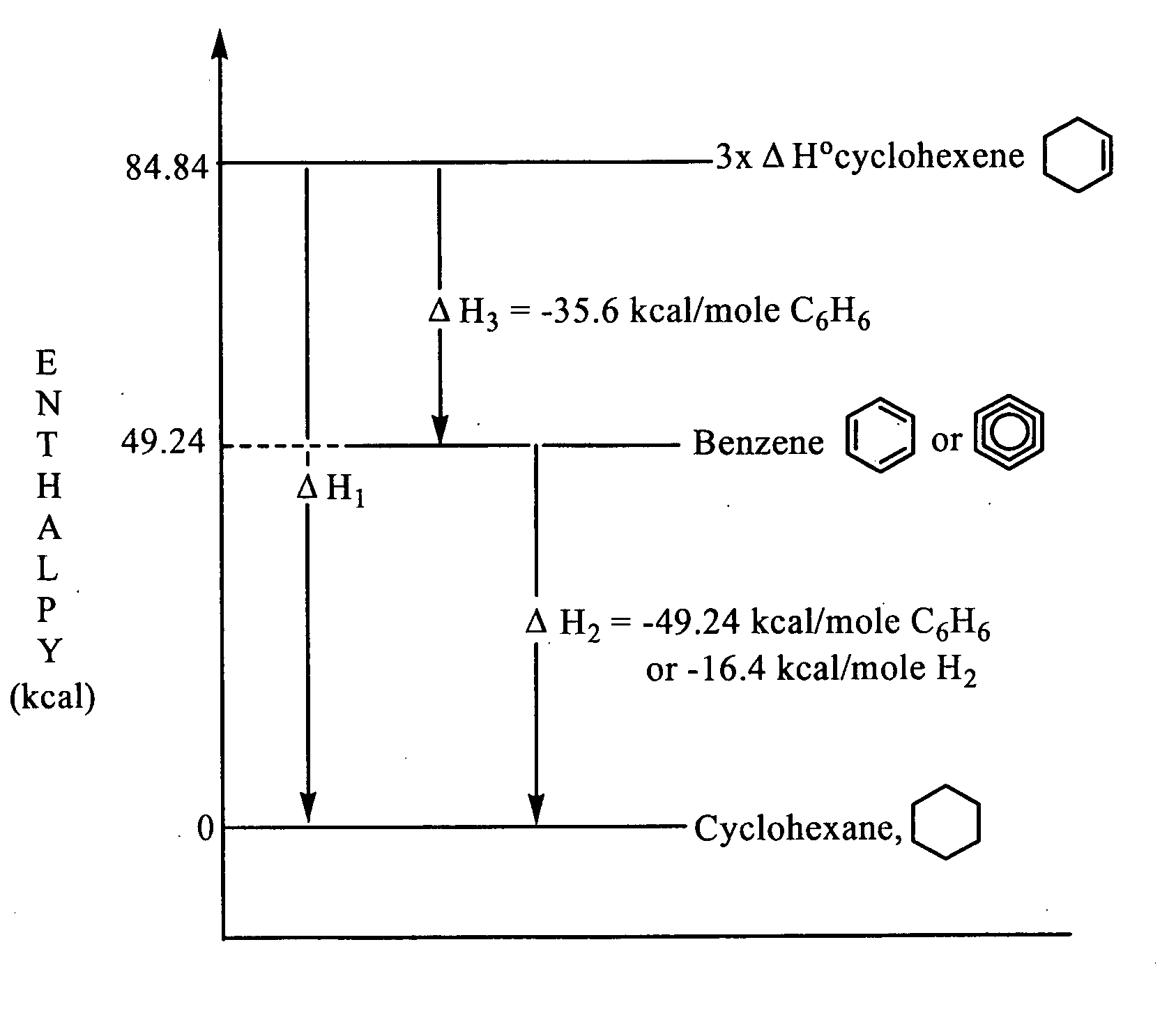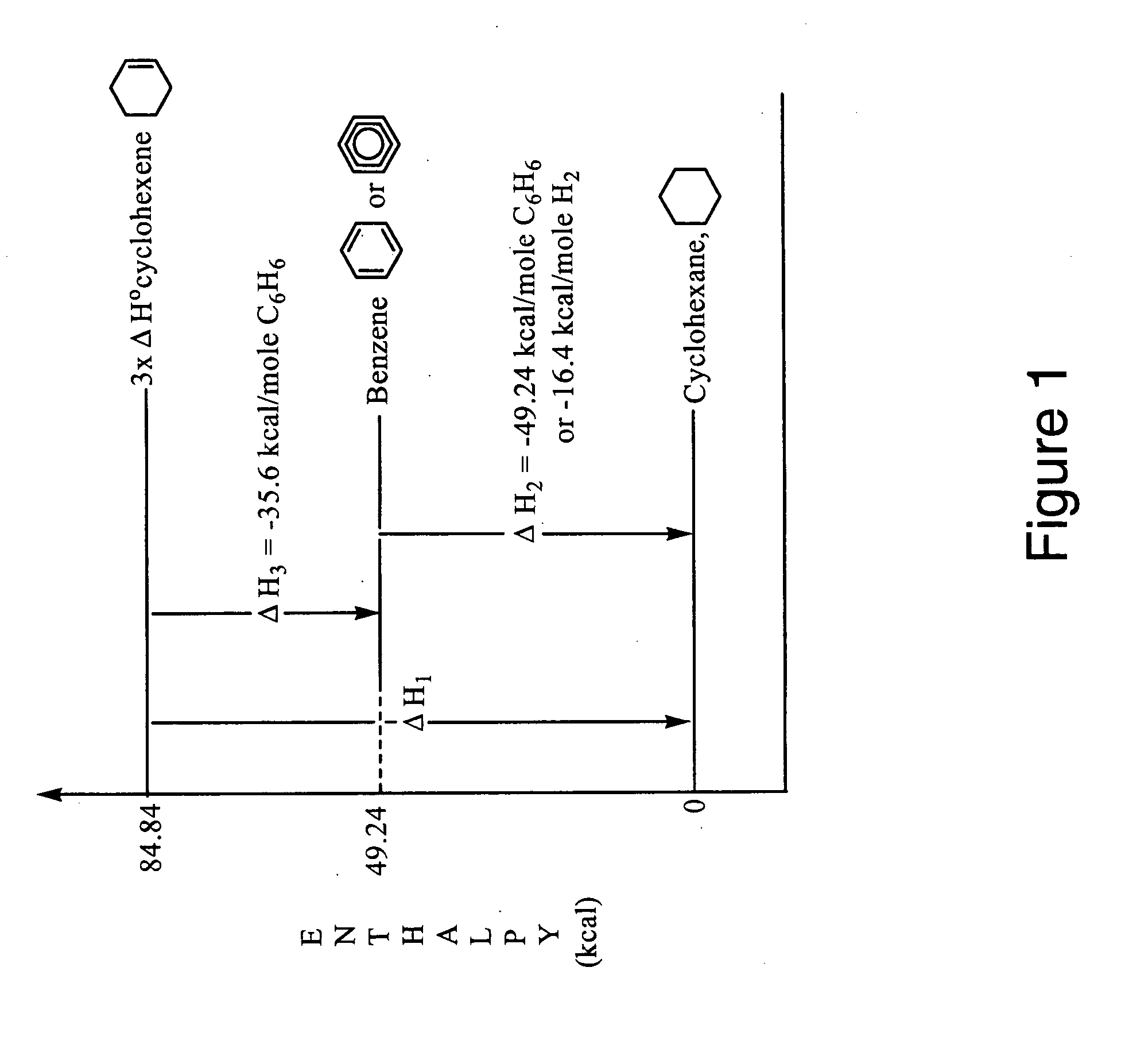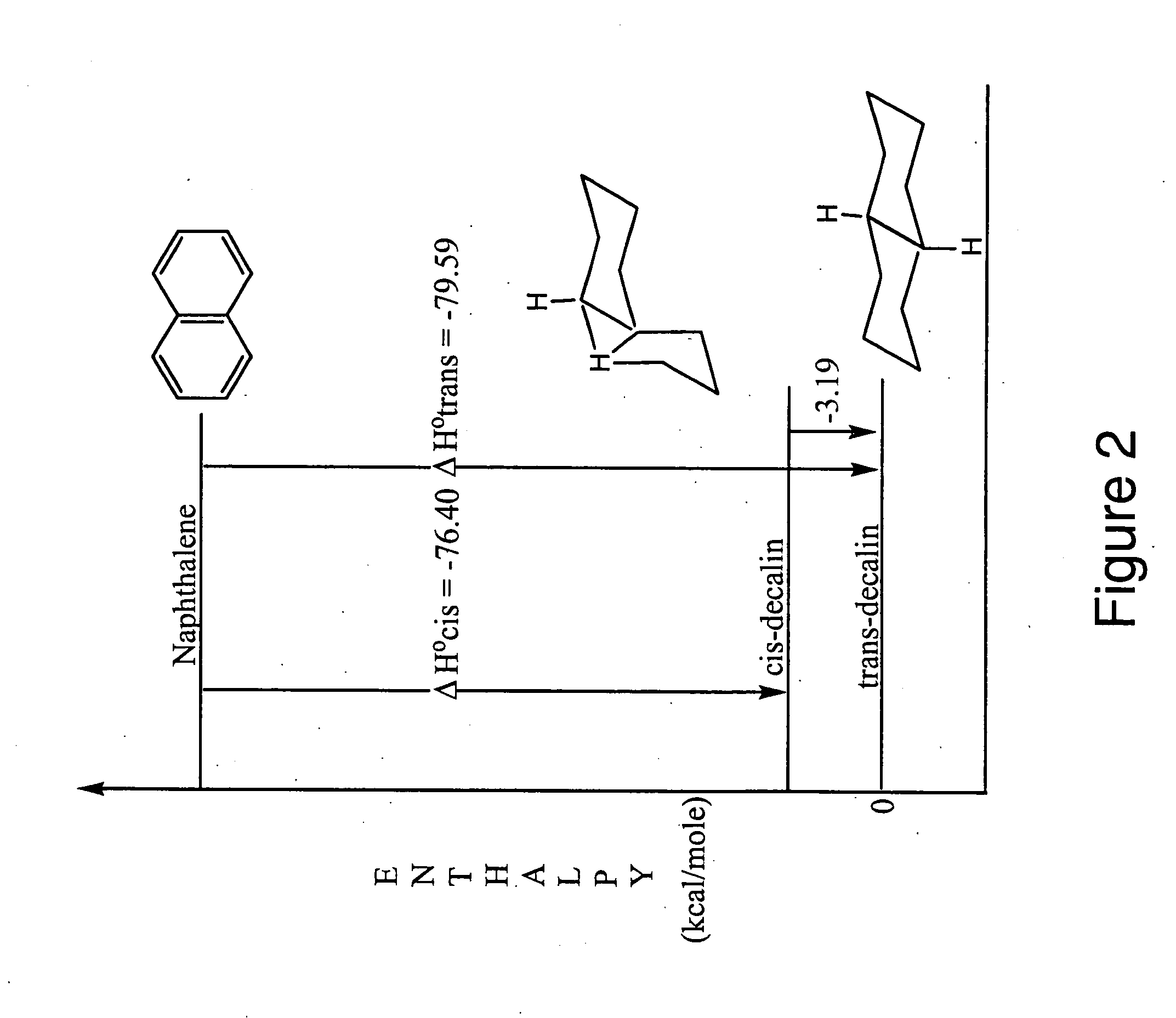Hydrogen storage by reversible hydrogenation of pi-conjugated substrates
a technology of reversible hydrogenation and substrate, which is applied in the direction of electrochemical generators, packaging goods types, transportation and packaging, etc., can solve the problems of difficult use of high reaction temperature than is not easily available, slow uptake of hydrogen gas, etc., and achieves convenient separation, effective and practical hydrogen storage, and less energy expenditure.
- Summary
- Abstract
- Description
- Claims
- Application Information
AI Technical Summary
Benefits of technology
Problems solved by technology
Method used
Image
Examples
example 1
Reversible Hydrogenation of Pyrene. A 0.2 g sample of pyrene (>99%, Fluka) and 0.1 g of rhodium on carbon catalyst (5% Rh, Acros Organics) were ground by hand with an agate mortar and pestle until a uniform color mixture was formed. The mixture was then placed in a 50 cc high pressure reactor (Parr instruments) equipped with a customized grinding apparatus. The grinding apparatus consisted of an elongated stirrer shaft with an arc-shaped paddle. The bottom of the reactor contained a stainless steel insert with a concave bottom, which allowed the paddle of the stirrer shaft to sweep the bottom of the reactor with ⅛″ clearance. Mechanical agitation of the sample mixture was carried out by adding 5-8 stainless steel ball bearings of varying size ({fraction (1 / 16)}″-¼″ diameter). The stirrer motor was programmed such that rotational direction of the stirrer would alternate between clockwise and counterclockwise directions during the course of the reaction in order to ensure that all of...
example 2
Reversible Hydrogenation of Coronene with 5% Rh on carbon catalyst and mechanical grinding. A 0.125 g sample of coronene (95%, Acros Organics) and 0.065 g of rhodium on carbon catalyst (5% Rh, Acros Organics) were ground by hand with an agate mortar and pestle until a uniform dark green mixture was formed. The mixture was then placed in a 50 cc high pressure reactor (Parr instruments) equipped with a customized grinding apparatus. The grinding apparatus consisted of an elongated stirrer shaft with an arc-shaped paddle. The bottom of the reactor contained a stainless steel insert with a concave bottom, which allowed the paddle of the stirrer shaft to sweep the bottom of the reactor with ⅛″ clearance. Mechanical agitation of the sample mixture was carried out by adding 5-8 stainless steel ball bearings of varying size ({fraction (1 / 16)}″-¼″ diameter). The stirrer motor was programmed such that rotational direction of the stirrer would alternate between clockwise and counterclockwise ...
example 5
Reversible hydrogenation of hexabenzocoronene (HBC) with 5% Rh on carbon and mechanical grinding. A 0.06 g sample of hexabenzocoronene (HBC) and 0.03 g of rhodium on carbon catalyst (5% Rh, Acros Organics) were ground by hand with an agate mortar and pestle until a uniform dark green mixture was formed. The mixture was then placed in a 50 cc high pressure reactor (Parr instruments) equipped with a customized grinding apparatus. The grinding apparatus consisted of an elongated stirrer shaft with an arc-shaped paddle. The bottom of the reactor contained a stainless steel insert with a concave bottom, which allowed the paddle of the stirrer shaft to sweep the bottom of the reactor with ⅛″ clearance. Mechanical agitation of the sample mixture was carried out by adding 5-8 stainless steel ball bearings of varying size ({fraction (1 / 16)}″-¼″diameter). The stirrer motor was programmed such that rotational direction of the stirrer would alternate between clockwise and counterclockwise dire...
PUM
| Property | Measurement | Unit |
|---|---|---|
| melting point | aaaaa | aaaaa |
| melting point | aaaaa | aaaaa |
| pressure | aaaaa | aaaaa |
Abstract
Description
Claims
Application Information
 Login to View More
Login to View More - R&D
- Intellectual Property
- Life Sciences
- Materials
- Tech Scout
- Unparalleled Data Quality
- Higher Quality Content
- 60% Fewer Hallucinations
Browse by: Latest US Patents, China's latest patents, Technical Efficacy Thesaurus, Application Domain, Technology Topic, Popular Technical Reports.
© 2025 PatSnap. All rights reserved.Legal|Privacy policy|Modern Slavery Act Transparency Statement|Sitemap|About US| Contact US: help@patsnap.com



